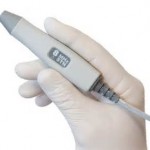The cause of certain migraine headaches is now well known be caused by peripheral compression of cranial sensory nerves usually caused by muscular contraction. This compression causes nerve irritation and serves as the nidus for the initiation of the migraine. In the auriculotemporal nerve migraine trigger area, its close association with the superficial temporal artery also creates the potential for a vascular source of irritation as well.

Perhaps to no great surprise, a positive doppler signal in the temporal region of greatest migraine pain consistently isolates an offending artery. This is a simple and important technique to ensure optimal reduction of intensity and frequency of temporal migraines. Whether the artery is ligated before the site of nerve compression or removed at the site, the elimination of the pulsations on the nerve is an important part of auriculotemporal nerve decompression.
Dr. Barry Eppley
Indianapolis, Indiana


